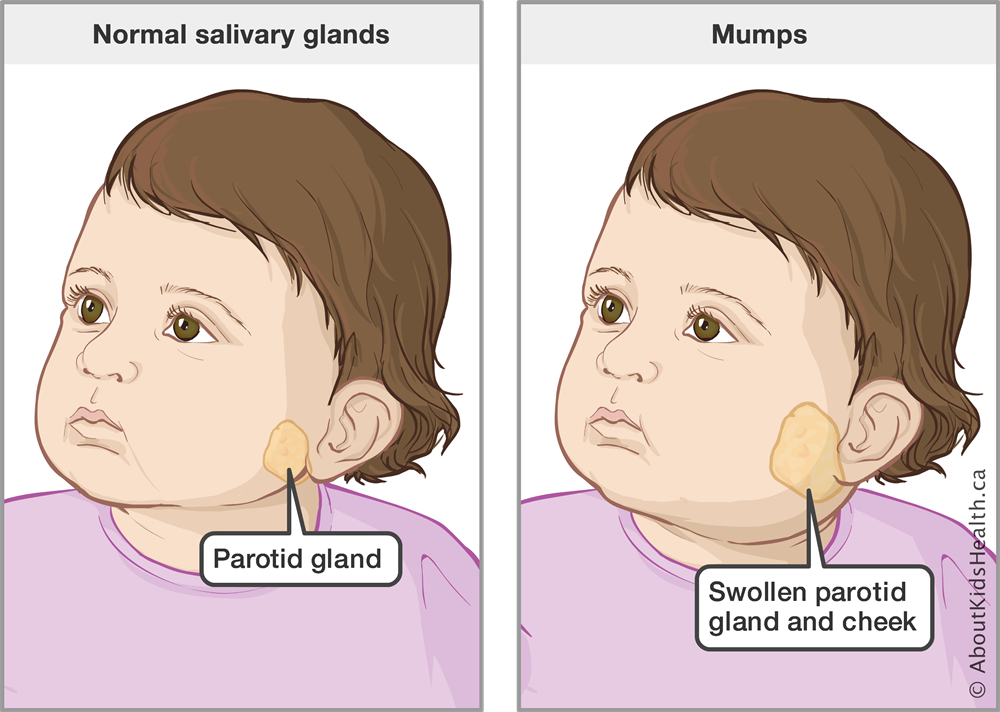- parotid glands on the insides of the cheeks
- submandibular glands at the floor of the mouth
- sublingual glands under the tongue
There are also several hundred minor salivary glands throughout the mouthand throat. Saliva drains into the mouth through small tubes called ducts.
When there is a problem with the salivary glands or ducts, you may have symptoms such as salivary gland swelling, dry mouth, pain, fever, and foul-tasting drainage into the mouth.
Causes of Salivary Gland Problems
Salivary stones, or sialoliths. The most common cause of swollen salivary glands, salivary stones are buildups of crystallized saliva deposits. Sometimes salivary stones can block the flow of saliva. When saliva can’t exit through the ducts, it backs up into the gland, causing pain and swelling. Pain is usually off and on, is felt in one gland, and gets progressively worse. Unless the blockage is cleared, the gland is likely to become infected.
Salivary gland infection, or sialadenitis. Bacterial infection of the salivary gland, most commonly the parotid gland, may result when the duct into the mouth is blocked. Sialadenitis creates a painful lump in the gland, and foul-tasting pus drains into the mouth.
Sialadenitis is more common in older adults with salivary stones, but it can also happen in babies during the first few weeks after birth. If not treated, salivary gland infections can cause severe pain, high fevers, and abscess (pus collection).
Infections. Viral infections such as mumps, flu, and others can cause swelling of the salivary glands. Swelling happens in parotid glands on both sides of the face, giving the appearance of “chipmunk cheeks.”
Salivary gland swelling is commonly associated with mumps, happening in about 30% to 40% of mumps infections. It usually begins approximately 48 hours after the start of other symptoms such as fever and headache.


Post a comment